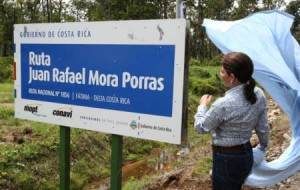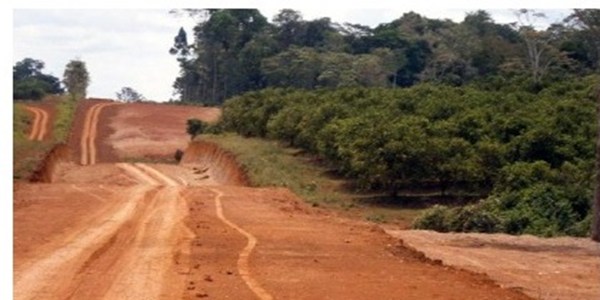Ruta Juan Rafael Mora Porras or Highway 1856- With the Nicaraguan government claiming environmental damage to the Rio San Juan Costa Rica is examining its past actions, or lack thereof, concerning its construction. For a year the government avoided establishing environmental controls and had no plan to mitigate the damage caused construction of the Juan Mora Porras Highway on the border with Nicaragua.
 Between December 2010 and December 2011, machinery moved through 160 miles of forests, grasslands, rivers and wetlands without an assessment of the impact on the environment or to even appoint a team to study it.
Between December 2010 and December 2011, machinery moved through 160 miles of forests, grasslands, rivers and wetlands without an assessment of the impact on the environment or to even appoint a team to study it.
Last November there was an initiative from the Board of the National Emergency Commission (la Comisión Nacional de Emergencias or CNE) to hire a team of consultants and assess the damage caused by the work and to propose mitigation measures during construction.
However, the Deputy Minister of the Environment (MINAET) Ana Lorena Guevara decided not to award any contracts for financial reasons and decided to have her own ministry make a plan.
Under Executive Order 36440, issued on March 7, 2011 by President Laura Chinchilla, prior approval from an environmental impact study before construction began was waived.
A year and a half after work began a new study by the Ministry of Environment shows the impact on local conditions: altered wetlands and deforestation in the area between the Medio Queso River and Boca de San Carlos and accumulated sediments in a wetland near the mouth of the Rio Sarapiquí and Caño La Tigra.
Deputy minister Guevara said she began to think of assessing environmental damage in October last year after questions from Nicaragua about the effects the construction was having on the environment.
“In November 2011 the road was already in its implementation phase, there was no possibility to prevent it, all that could be done was to take mitigation and compensation measures because the damage was already done,” admitted Guevara.
The then deputy environment minister, Andrei Bourrouet, was commissioned to prepare terms of reference for that contract. “I was asked to prepare terms of reference for an interdisciplinary team to assess environmental damage, and I did, but the responsibility to carry out this initiative was with a different person,” said Bourrouet.
Vice Minister Ana Lorena Guevara, who succeeded Bourrouet in office, claimed that she took the matter to a high level committee composed of the deputy ministers of the Presidency, Mauritius Boraschi; Foreign Affairs, Carlos Roverssi and Security, Walter Navarro and that the decision not to hire outside consultants was made by that group.
Deputy Minister Boraschi noted that each institution had responsibility for its own specific area. “Vice Minister Guevara at MINAET said they had the technical capacity to do the job and we accepted it.”
A similar version offered deputy Carlos Roverssi. “The MINAET told us that they could assess the environmental impact and develop a mitigation plan. Each institution is responsible for its own area and others suggested that we accept the plan from Deputy Minister Guevara.

